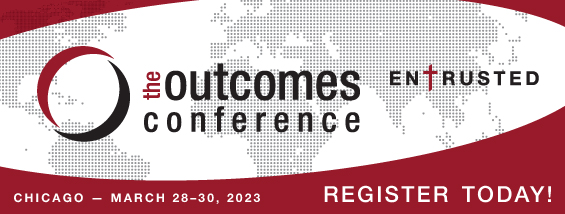
Driving Success with Thoughtful Communications By Michael J. Tomlinson

Resilient Leaders Drive Success With Thoughtful Communications
“Success is not final, failure is not fatal – it is the courage to continue that counts.”
– Winston Churchill
Whether speaking with colleagues in the diverse corners of philanthropy, with our strategy teams at BDI, or with resilient leaders at nonprofits we serve alongside, one core question seems to dominate my conversations with leaders lately…
“What’s coming next?”
Of course, for those tasked with leading teams and programs to success – and ultimately with increasing impact and changing lives for the better – understanding the environmental conditions in which we operate isn’t only sensible. It’s critical to drive successful outcomes.
The problem is – it’s unknowable!
The “unpredictable weather” post-COVID, be it economic, sociological, cultural, and/or geopolitical forces, all impact the nonprofit world’s ecosystem and the giving trends we’ve seen over the past two years. Right now, making assumptions about the future is as productive as trying to push “IN” on a door clearly marked “OUT”!
Addressing the question of what to do now, when you don’t know what to expect in the world around you, investment guru Warren Buffett has a surprising recommendation:
“People ask me what to invest in when the market is unpredictable and interest rates are skyrocketing, etc., and I reply – invest in yourself. No one can tax it or take it away. If you get stronger and better, no matter what happens around you, you will do well.”
I love this practical idea and think that we, as resilient leaders, must be disciplined about investing energy in areas that can directly influence our effectiveness to drive successful outcomes. Specifically, we should consider what do WE need to BE, and what do WE need DO to help our teams and organizations thrive no matter the weather we get this year.
What do we need to BE?
Last year, I featured an insightful article penned by BDI Board Chair and President of L.A. Pacific University, Dr. John Reynolds, titled, “Successful Leadership in Volatile, Uncertain, Complex, and Ambiguous (VUCA) Times.” John makes the case why leaders who are Visionary, Understood, Courageous, and Agile (“VUCA”) are best positioned to not only navigate storms but to charge through them.
I’m sure it’s no surprise to you – A year later, times are even MORE VUCA, especially when trying to anticipate the drivers of generosity, which are the undercurrent of giving and the very fuel for the ability to expand the services of our nonprofits and ministries when the needs are so great.
So then, what do we need to BE?
Winston Churchill identifies “the courage to continue” through both wins and losses, over time, as an enduring quality of leadership. I’d call this RESILIENCE. We need to be RESILIENT LEADERS that drive successful outcomes in VUCA times!
- Resilience develops COMPETENCY.
- Resilience builds CONFIDENCE.
- Resilience is COURAGE demonstrated.
- HOPE is projected through resilience.
- FAITH is lived out through resilience.
- MATURITY is nurtured through resilience.
As we act with this spirit of resilience, we become leaders who inspire the trust of those around us – which leads them to look to us for not only what to be, but what to do. This is how resilient leaders drive successful outcomes.
What do we need to DO?
Returning to Dr. Reynolds’ well of wisdom, he published a series specifically for leaders like you and I that is timely, action-focused, well-researched, and truly worthy of your time. In it, John has identified seven key disciplines – things we can absolutely focus on and do today – that I’m sure will pay significant dividends as we faithfully charge forward with what we know and despite what we do not.
Exercise thoughtful communication.
Communication is the foundation of any leader’s success in informing, influencing, and leading organizations. Gilbert Amelio, CEO of several technology companies including Apple, stated it succinctly by saying,
“Developing excellent communication skills is absolutely essential to effective leadership. The leader must be able to share knowledge and ideas to transmit a sense of urgency and enthusiasm to others. If a leader can’t get a message across clearly and motivate others to act on it, then having a message doesn’t even matter.”
What’s become evident in fast-changing times is that the preparation of the communication, especially in WFH employee models, is more essential than in the past. The luxury of “reading the room” and engaging interactively in a streamed broadcast is no longer easy, and in many cases – especially to a larger audience, where it is being recorded – the resilient leader needs to remember that every word is being critically analyzed.
The discipline of communication evolving over the last two years could now be described as thoughtful communication. As it has become more difficult to be spontaneous, ad lib, or extemporize (think of black squares with large names on a ZOOM call), so has improving the discipline of thoughtfully planning and framing what needs to be communicated.
Next is the simple, four-principle checklist that will make you a “thoughtful” communicator in VUCA times.
Key principle #1: Frequency
With the pace of change around us and continued uncertainty, it’s a given that more frequent communication is here to stay. The occasional town-hall, company-wide memo and remarks at big occasions is not going to be enough for the organizations you lead. Changing times and workforces will require a more frequent and intentional communication strategy for successful outcomes.
For leaders, this requires more time and planning. Weekly verbal updates to the entire organization (Monday) in addition to a formal weekly update (Wednesday) is now the norm in the organization I lead. If I “miss” one week, my inbox is flooded! The size of the organization, your workforce model (remote/hybrid/office), geographic distribution, and stability of the operations will uniquely influence frequency and mode, but a formal plan for frequent communications is no longer an option for today’s leader. Be thoughtful in what is the best frequency and mode for you as a resilient leader in VUCA times.
Key principle #2: Clarity
The amazing advancement we’ve seen in broadcast technology (ZOOM, TEAMS, etc.), has raised the potential for more confusion. Research shows that about 2 in 3 adults are visual learners and although these adults see the leader visually, the verbal message is not always clear. As thoughtful communicators, more leaders are following up their organizational messages with written transcripts, Q&A sessions, and other means to ensure that the message they thought was being communicated is actually the message being heard.
A new technique that I now use after almost 40 years in leadership is a teleprompter on my tablet. This forces me to..
- Prepare well and scrutinize the message for clarity by preparing a printed text.
- Reduce ad-lib words and phrases that might cause ambiguity or confusion being added on the fly.
- Provide an immediate transcript that can be distributed as follow up to the audience immediately after the communication.
Regardless of the leader’s process, the enemy of clarity: ambiguity, confusion, vagueness, and obscurity should be eliminated at all times, but with special thoughtfulness in disruptive times.
Key principle #3: Consistency
Employees are living personal daily lives that are flooded with inconsistency. Receiving inconsistent messages on the economy, pandemic, and geopolitics are common in media streams. Confusion on what’s fact and what’s fiction when it comes to available information – and in an incredibly active social media world – is not unusual.
However, what cannot be inconsistent and confusing in their professional life are the communications and messages being received from their leaders. This is especially important in remote workforce models where there is little opportunity for office/cubicle/water cooler chatter to collectively process apparent ambiguities or changes in understanding with their peers.
There are at least two considerations to be “thought” through by the resilient leader in this regard.
- Ensuring the message is consistently being “cascaded” through the leadership structure.
- Ensuring that the message stays consistent and aligned with other thoughtful communications.
With the normalization of recorded Zoom Team calls, remote employees, and more frequent communication needs, attention to consistency by the leader is imperative.
Key principle #4: Transparency
It’s been said that transparent communication is the intention of both good and bad information being shared upward, downward, and laterally in a manner that unveils the “why” behind the message. For leaders, especially leaders in VUCA times, integrity, honesty, and compassion are non-negotiable – there must be a culture of transparency. Ultimately, this boils down to trust.
To trust the communication, the communicator must be trusted, and trust is synonymous with transparency. When there’s continual change in an unpredictable world, it becomes more and more difficult to know what the future holds with any measure of confidence. The only solution to this dilemma is transparency from the leader and trust of the leader by the follower.
The signature theme of these four reminders: frequency, clarity, consistency, and transparency are diligence and thoughtful planning in communications. Leaders have always communicated, but in these VUCA times, additional thought characterizes the resilient and successful leader for the future. The famous orator/communicator Sir Winston Churchill stated is so well:
“If you want me to speak for two minutes, it will take me three weeks of preparation. If you want me to speak for thirty minutes, it will take me a week to prepare. If you want me to speak for an hour, I am ready now.”
Sage words here, both from Churchill and Reynolds. Thoughtful communication.
This is an area we can absolutely impact and control – redoubling our efforts to build additional resiliency in our teams and in ourselves.
Remember, leaders, you are not alone.
“Have I not commanded you? Be strong and courageous. Do not be afraid; do not be discouraged. The Lord your God will be with you wherever you go.”
Joshua 1:9
Onward and forward!
####
Michael J. Tomlinson, is the CEO and President of BDI. Better known as “MT,” is an accomplished marketing and media executive who has developed highly successful fundraising programs for faith-first charities and organizations across the U.S. and abroad. He brings more than 25 years of executive leadership in business and holds a master’s degree in Organizational Management and Marketing.

BDI is the sponsor of the Resource Development Track at The Outcomes Conference 2023.
Their agency is passionate about releasing generosity!
Discover all that has been planned for you!

What is Christian Leadership Alliance?
Christian Leadership Alliance equips and unites leaders to transform the world for Christ. We are the leaders of Christ-centered organizations who are dedicated to faithful stewardship for greater kingdom impact.
Sign up for FREE blog updates.
Upcoming Events
Check back later!


